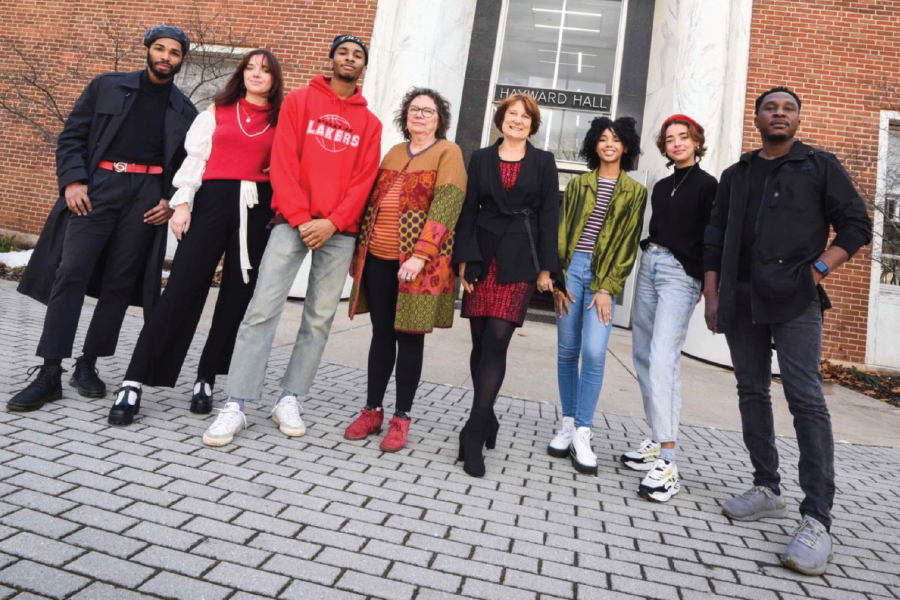The Common Thread

(From left to right) Dwayne Smith, Maisy Ingalls, Terrence Bridges, Anne Hand, Amy Copeland, Kierra Lee, Adriana Soto and Assim De Gabriel.
For Jefferson Design students, crafting red dresses is the first step in a lifelong journey of community activism.
EVERY YEAR, STUDENTS at Jefferson Design School in the Pattern Development II course are tasked with making an evening gown, a difficult design style that requires a technique called draping.
But the dresses carry a power beyond elegance and technical skill. What they all have in common is the color red, which brings awareness to heart disease.
Each year, a representative from the American Heart Association comes to talk to the students, explaining that heart disease is the number one killer of women.
Students also learned that heart disease disproportionately affects women of color. According to Dr. Jaya Aysola, pediatrician and executive director of Penn Medicine’s Center for Health Equity Advancement, 49 percent of Black women over the age of 20 have heart disease. South Asian women have the highest rates of heart disease. Aysola says this illustrates a bias in medicine: “We’ve seen it as a white male disease. That unconscious bias has stayed with us so strongly that it seeps into our ability to recognize patterns of presentation for heart disease [in women].”
To create change, we need to hold the medical community accountable, Aysola says. But in the meantime, community activism like the Red Dress project makes a difference in its own way.
Realizing her project’s impact helped Gabrielle Ramos connect with it on a deeper level. Her design was inspired by her grandmother, but the awareness she was raising made it that much more meaningful.
Dwayne Smith’s Red Dress project was inspired by the war on diamonds in Sierra Leone. He learned a bias weaving technique inspired by Sierra Leonean women. He was able to honor the lives lost in the conflict, represent Sierra Leonean culture and raise awareness around heart disease.
Another student, Kierra Lee, took inspiration from the Egyptian goddess of health, Isis, using her image to uplift minority women.
At the end of the project, there was an army of 28 dresses on display in Jefferson’s Hayward Hall. Although each dress is different, with a unique story, the commonality of color represents a common need: To fight the widespread threat of a fatal and under-diagnosed disease.
This is a paid partnership between Go Red For Women and Philadelphia Magazine